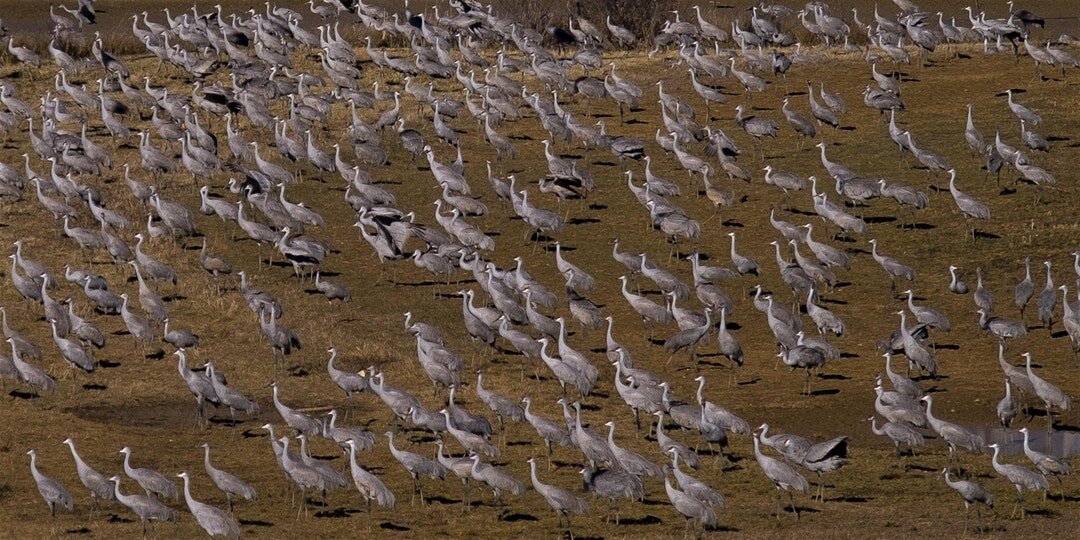A Trumpet in the Orchestra: The Migration Patterns of Sandhill Cranes
“When we hear his call, we hear no mere bird. We hear the trumpet in the orchestra of evolution.”
The fossils of a bird with an identical structure to the sandhill crane have been carbon-dated to have lived 10 million years ago, making the sandhill crane the longest surviving bird on the planet. Standing at over 4 feet tall and having a wingspan of over 6 feet, the sandhill crane is one of the largest birds found in the Eastern United States. They are gray in color with a long neck, long legs, and a long pointed beak used for probing in the soil for seeds and insects. Sandhill cranes also have a distinctive red patch on their foreheads, which is larger on the males. During the breeding season, the cranes will increase the blood flow to this area on the forehead to create a bright red color and attract potential mates. They usually live in areas with large open fields and shallow water. Their primary food sources are seeds, insects, and benthic macroinvertebrates.
Every year, these magnificent birds migrate from the Prairie Pothole Region of the upper midwest and southern Canada down to the Gulf Coast. While in flight, the sandhill cranes call constantly. These calls can be heard from over a mile away and help the cranes keep their flight pattern. They typically fly in a V formation and can be easily distinguished from geese by the long legs trailing behind them. The Tennessee Wildlife Resource Agency (TWRA) started a program in 1990 to make Eastern Tennessee a stopover location for these migratory birds. One of the locations chosen was the Hiwassee Wildlife Refuge in Birchwood, Tennessee, where a flock of some 80,000 sandhill cranes stops to rest and feed during their migration south. TWRA plants corn in this area every year to supply some of the food needs — and with shallow water nearby, this creates an ideal location for the cranes to rest.
One of the most highly endangered birds in the United States exists within these large flocks of sandhill cranes. The beautiful and majestic whooping crane is learning to migrate with the Sandhill Cranes. There are only about 450 whooping cranes in the wild and about 160 in captivity. These birds are slightly larger than the sandhill cranes and have bright white plumage. When they started the recovery program in the 1940s, there were only 21 whooping cranes left alive due to habitat loss and hunting. The whooping cranes were taken into captivity and bred. When they were released, they didn’t know how or where to migrate — there were no whooping cranes left in the wild to show them how. Scientists used ultralight to guide the cranes during the migration and made the trip with the natural migration of the sandhill cranes. These birds have since learned to migrate with the sandhill crane flocks.


